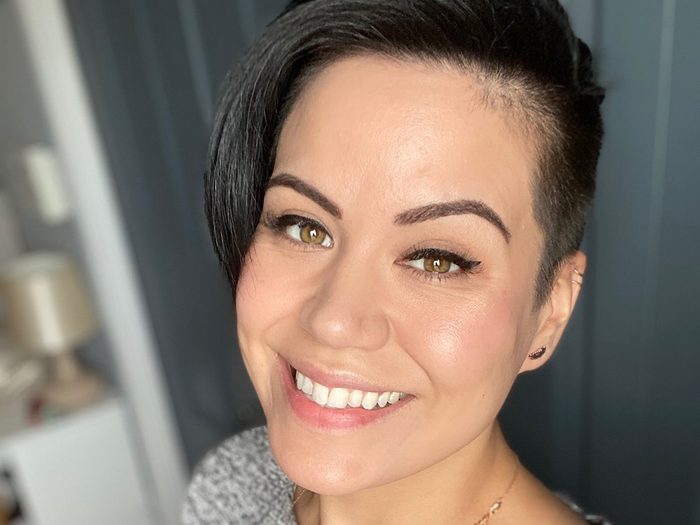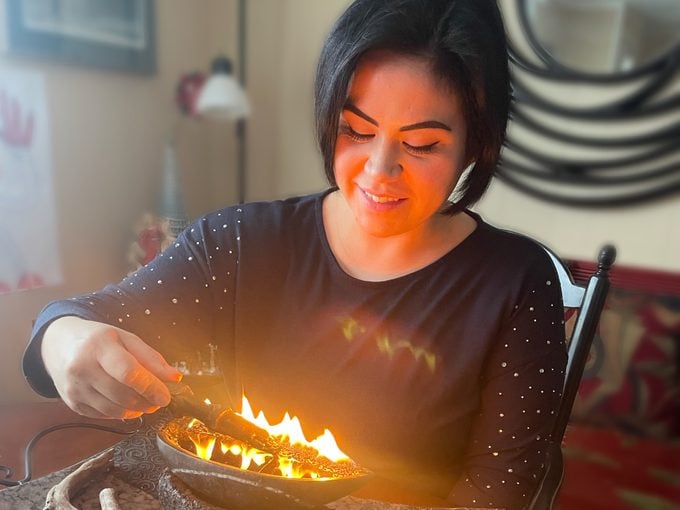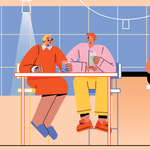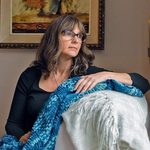I Need You to Know: Good Relationships Are Vital to Good Health Care

As an Inuk, relationships define how I navigate the world. As a nurse, I’ve learned how crucial they are to health care.
I consider myself a young nurse—not in age, but in experience. I work for the Northwest Territories Health and Social Services Authority, offering clinical support for frontline public health nursing staff. I’m still learning all the time. And it took me a while to understand that my work, which is all about compassion, empathy and shared responsibility, overlaps with the most beautiful aspects of my Inuit culture.
As an Inuk, I build relationships with people by listening to their stories. We always try to recognize where they are coming from, to find a common understanding with all people we meet. We also build relationships in formal ways, through community, friendships, marriages, and names. I was given a very special name: Tuurngaq. Tuurngaq was a shaman, or a healer, and she was knowledgeable and experienced and very respected. When I was born, my family and those close to Tuurngaq felt that her spirit was in me and gave me her name. This was not a random choice, but one discerned as a community. Her name was a gift, but also a huge responsibility. When you’re given someone’s name, you also inherit all the relationships that come with it. Her family became my family, her supports became my supports. I eventually came to see it as a blessing, but at first, when I would hear: “you’re a healer and you will do amazing things”, I rejected it. I have a strong personality, and like many young people, I didn’t want to be told who I was or what I would become. I needed to find my own way to becoming a healer, and it took some time.
I grew up in Igloolik, a small hamlet in Nunavut with a nursing station. We were a very well family—our interactions with the health centre were minimal. So, I never really paid attention to what nursing looked like in a small community, because my wellness and health support came from within my family. Our mental health needs were met by family and community. We had most of our nutritional needs met by traditional foods. We were physically well because we went camping and hunting. The health care system existed in the background.
When I was 14 years old, I needed an emergency appendectomy, and I spent a week in hospital in Iqaluit. The experience was really strange, very formal and nobody explained anything to me. The doctors and nurses had a to-do list that they executed. I went in sick and came out well. There was no relationship-building.
In contrast, some of my family members had very dark experiences with the health care system, particularly with the TB outbreaks in the North. Boats and planes arrived to scoop up our sick people, many of whom didn’t speak English, and bring them south to sanatoriums without any explanation. This happened to my relatives, just one generation ahead of me. And so, we grew up with fear and distrust of the health care system. You should only interact with it when you’re really sick. And if you make yourself vulnerable to it, you don’t know what will happen to you.
In my early 20s, I lived all over the north doing contract admin work, as my partner’s job allowed us to explore different communities. I wasn’t sure what I wanted to do or what I wanted to be. But it was a job doing clerical work at a community health centre that really changed how I understood health care and a nurse’s role in it. I saw how relational and community-oriented the nurses were. How, no matter where they came from, they could really be a part of the community and work closely with Indigenous people.

I began to see that the quality of health care was better in the small communities I visited. Quality of care to me includes relationship, communication and transparency. So, as a patient, I know exactly what I’m going to get when I come in. There’s no mystery. You’re explaining it to me, I’m invested, I’ve made a conscious decision to participate with you. And I’ve given you my consent. There might not be an MRI or a heart surgeon on-site, but if the community health nurse has advanced assessment skills, knows how to set, and respect, limits and boundaries, and teaches community members to make good decisions about their own care and navigate a system that is not structured to support Indigenous people, that’s powerful. Far more powerful than arriving at a large facility in an unfamiliar place where you’re just on someone’s to-do list.
When I saw that work in action I thought, okay, that’s how I can actually be a healer—I could actively pursue community health nursing in remote settings because I wanted to feed and strengthen that service, and I wanted that service to thrive. It made me realize that health and healing can look way different than what I had experienced, and what I had rejected, my whole life.
By the time I started nursing school, at 25, I was ready for the responsibility and the gravity of a nursing career. Everything I had learned and experienced before gave me a nuanced worldview and an understanding of the complexity of being an Indigenous person living with colonial systems. I came to a nursing career wondering, how do we deconstruct those systems and then rebuild them so that they are representative of multiple cultures and multiple belief systems, and make it safer for people in general?
We’re only now trying to catch up on things like informed consent, recognizing disenfranchised folks, honouring people’s gender, honouring people’s language, and the colour of their skin. These are things that we pride ourselves on today, but they didn’t exist a very short time ago. We might have started to change our mindset and update our curriculums, but that change is trying to insert itself into long-standing, anti-Indigenous systems that don’t support it.
If you look at the presence of enforcement in the north—police, military, anybody who has power to enforce laws—that relationship was set up to punish Inuit for being Inuit. And to enforce the other anti-Indigenous systems: education, which was structured around removing children, the most malleable but precious, from their families; the church, whatever church it was, which was trying to teach Inuit that the Inuit way was wrong; and health care as well, where sick and vulnerable children and adults were taken away without offering them or their families the chance to make an informed decision or give consent. And if you didn’t participate in those systems, you were harmed, you were punished or maybe even killed.
One of the big questions that most practitioners ask is: How do I do this work so that I don’t trigger or re-traumatize the person that I am here to serve or to help? Teachers, nurses, social workers, police, even the media, they all want examples, or even a cookie-cutter answer. But that reverts to a to-do-list approach to a problem. Most Indigenous people I’ve talked to want both parties to approach all of these relationships with an open heart and good intent. It’s such a simple concept, but I think that we don’t realize how powerful it can be. You don’t have to have answers. But your intent should never be, I’m going to fix you. Colonialists have been trying to “fix” us for hundreds of years, and it hasn’t worked.
Relationships are important to all Indigenous cultures. Relationships between their leaders, their elders and their children have to be intact. And anything that we can do within the health care system to honour and foster those relationships will inherently build trust. We can still get our to-do lists done, but they can be informed and defined by the Indigenous community that we’re serving. As a practitioner, you can arrive and just situate yourself. “Hi, I’m a nurse. I’m new here, so I don’t know much about this place, and I don’t know what you need from me, but I’m ready to learn.” If you go into that same setting saying, “I don’t know anything about this place and I’m not going to learn, I’m just going to get my work done,” that doesn’t create trust. And that does not dismantle the negative perceptions these communities have about health care.
Instead, I try to find a way to work together with my patient on whatever is important to them and their community. And sometimes, as the nurse, you are going to bring up something like, if your vaccinations are up to date, that would be helpful for the community. Or if we did this type of screening for these kinds of cancers, that would be really helpful. If everybody came in and did this test, that might help. You can do that teaching, that prevention and early intervention work, once you establish a relationship that leads to trust. And it doesn’t take a long time to create. Sometimes I’ve been in communities for two weeks and because of the way that I approach the work, my patients see that it’s different than what they’ve experienced with other transient nurses. It’s not a new idea. And I don’t take credit for it. But it works.
Next: Meet Sisters Sage, an Indigenous Wellness Brand Reclaiming Smudging




